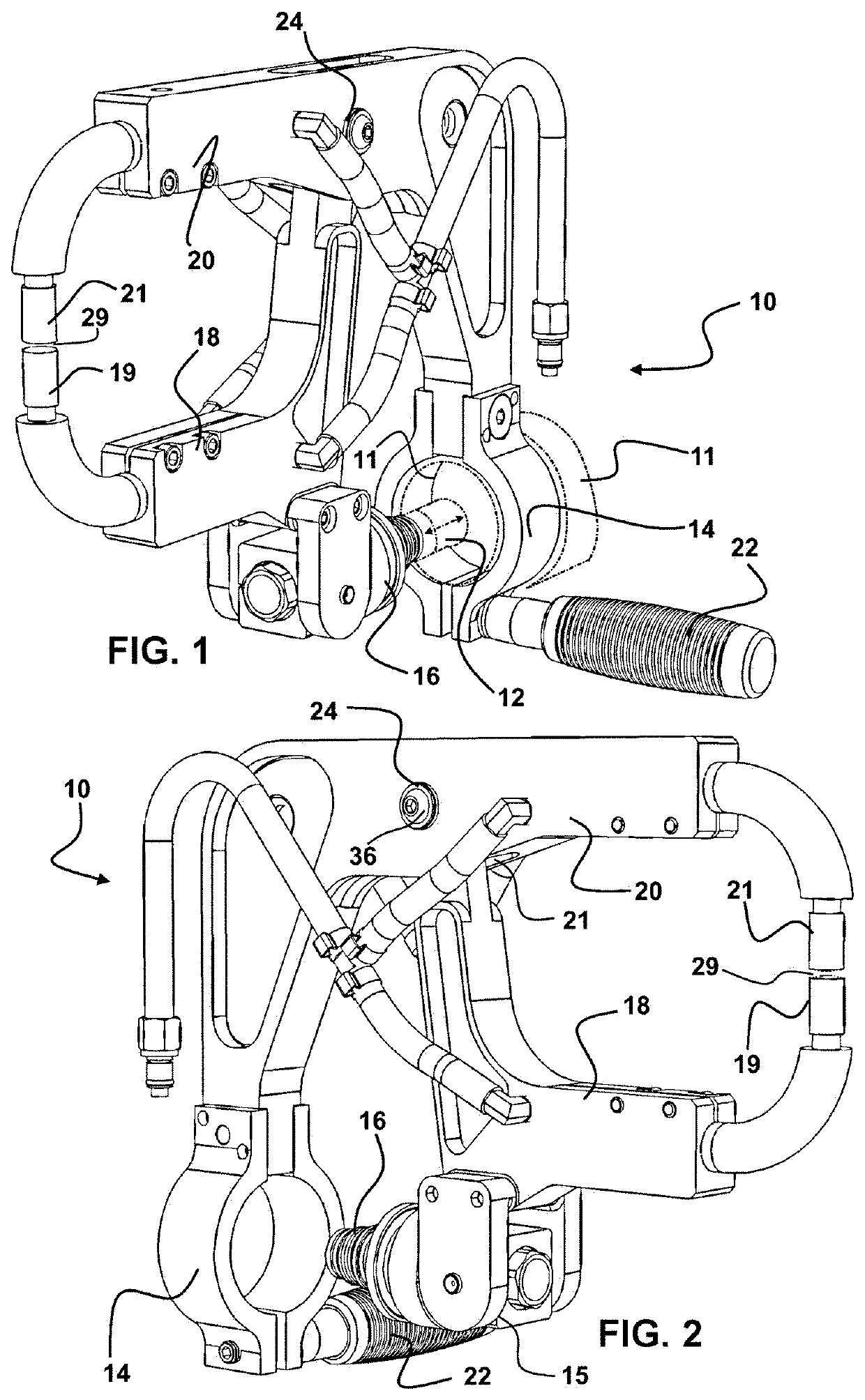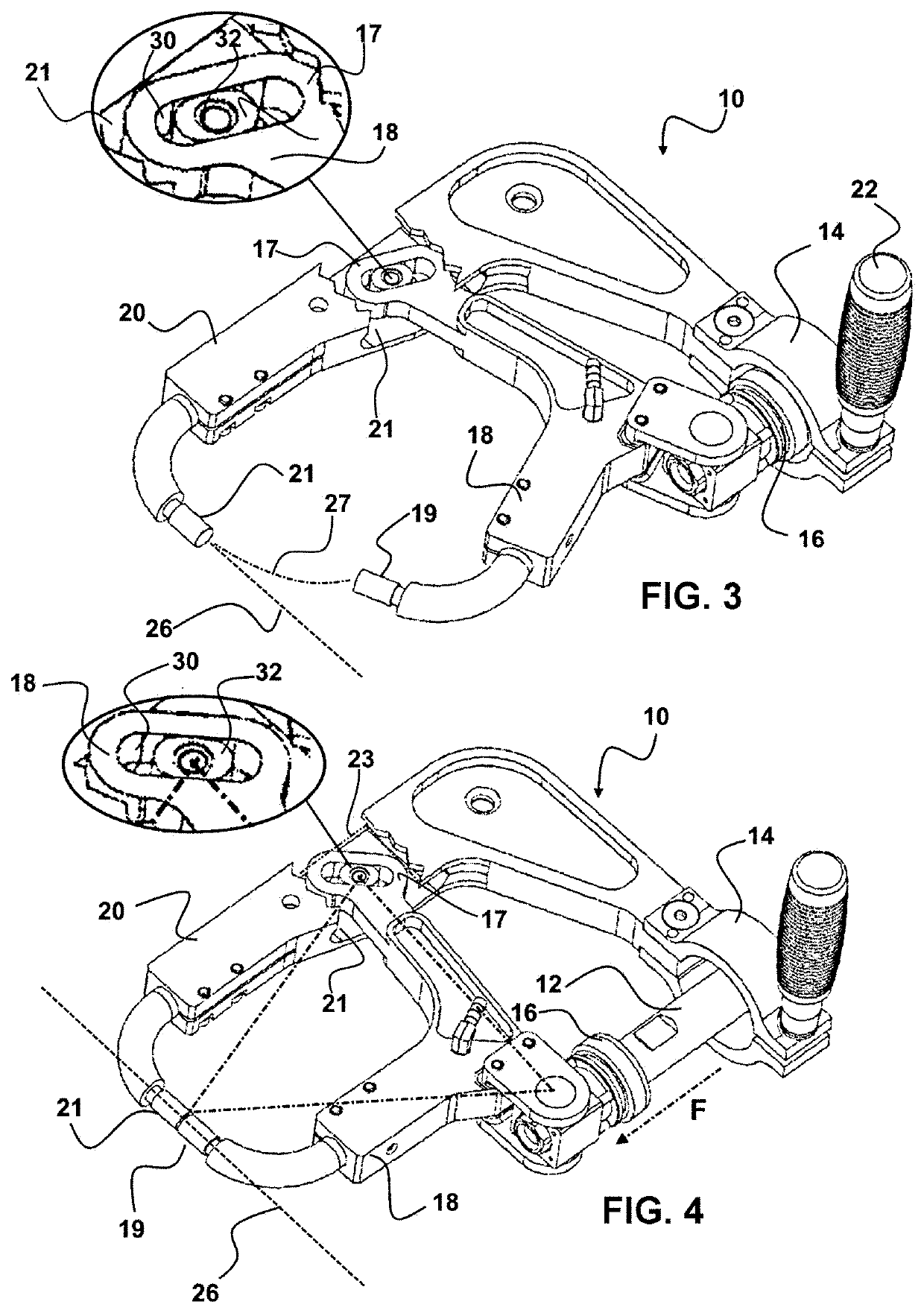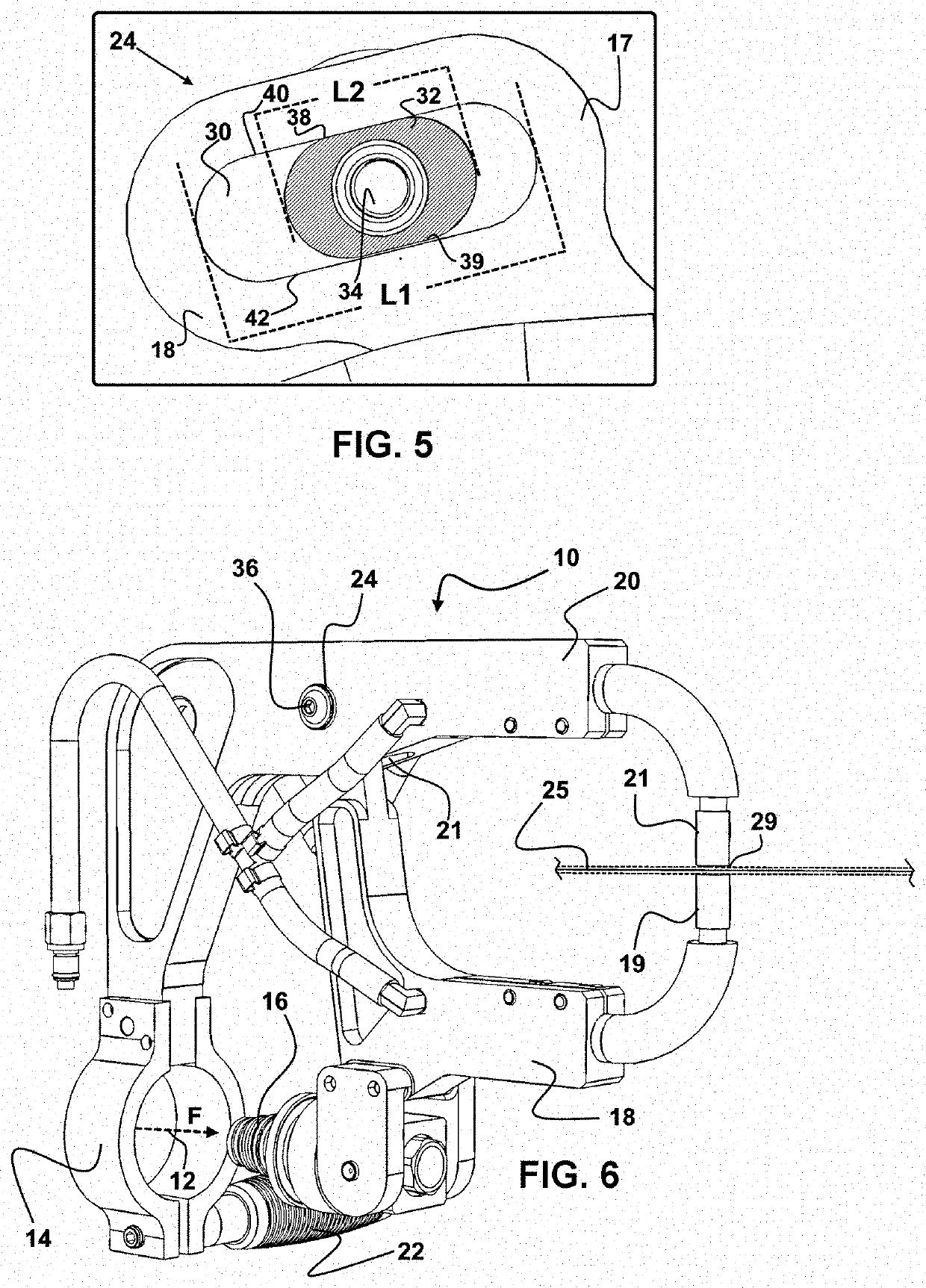Resistance multi purpose welder attachment
a multi-purpose, welder technology, applied in the direction of resistance electrode holders, electrode features, manufacturing tools, etc., can solve the problems of x-type configuration offering less flexibility in tooling, various limitations of spot welding related art, etc., to achieve accurate measurements of compression and width or thickness of metal placed
- Summary
- Abstract
- Description
- Claims
- Application Information
AI Technical Summary
Benefits of technology
Problems solved by technology
Method used
Image
Examples
Embodiment Construction
[0037]Referring now to the drawings of FIGS. 1-7, wherein similar parts of the invention are identified by like reference numerals. There is seen in FIGS. 1-2, the device 10 which is a portable resistance welder multi-purpose attachment device 10, which is configured for a removable fixed engagement to a hand held or similar welder 11 which has a translating welder electrode 12 in communication with electric current for welding. Such welders with translating welder electrodes 12 are well known and widely employed, such as for example and in no way limiting, the PS-500 or the I4S spot welder from ProSpot quality welding systems of Carlsbad, Calif.
[0038]Such handheld welders conventionally have a powered translating electrode 12 which is powered to move forward and reverse by hydraulic pressure, pneumatic pressure, or an electric drive such as for example a motor and worm gear. The term handheld welder 11 thus as used herein, means any welder which has controllable translating electro...
PUM
| Property | Measurement | Unit |
|---|---|---|
| slot angle | aaaaa | aaaaa |
| axis angle | aaaaa | aaaaa |
| angle | aaaaa | aaaaa |
Abstract
Description
Claims
Application Information
 Login to View More
Login to View More - R&D
- Intellectual Property
- Life Sciences
- Materials
- Tech Scout
- Unparalleled Data Quality
- Higher Quality Content
- 60% Fewer Hallucinations
Browse by: Latest US Patents, China's latest patents, Technical Efficacy Thesaurus, Application Domain, Technology Topic, Popular Technical Reports.
© 2025 PatSnap. All rights reserved.Legal|Privacy policy|Modern Slavery Act Transparency Statement|Sitemap|About US| Contact US: help@patsnap.com



